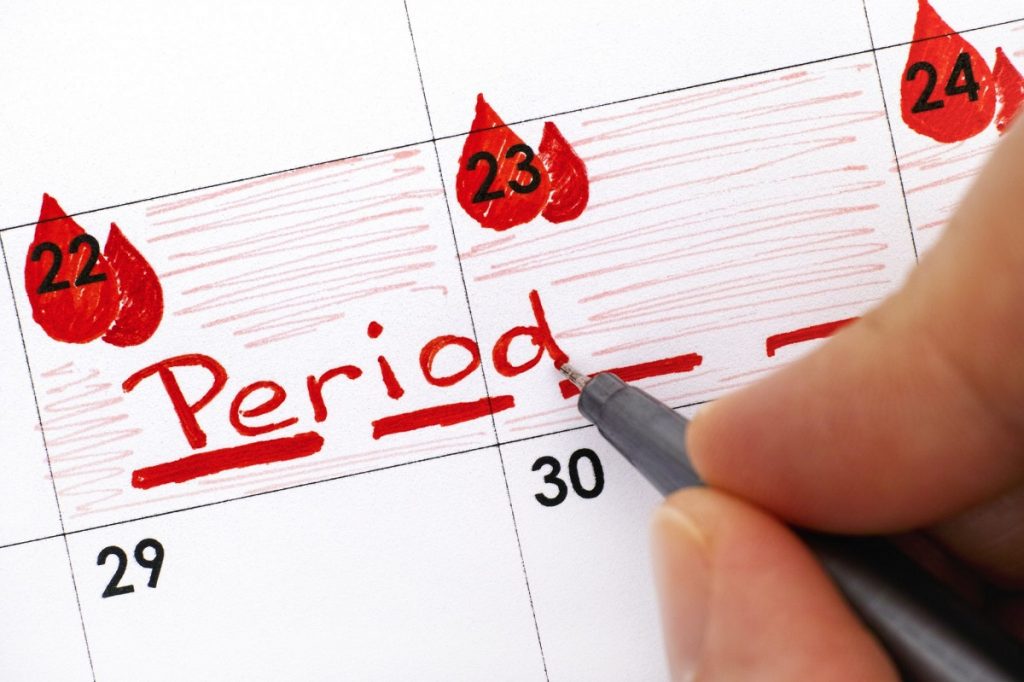No woman looks forward to her period each month. While completely normal, vaginal bleeding and the discomfort that typically comes with it—cramps, bloating, headaches, etc.—can be rough to say the least. After all, that’s why your period is called “that time of the month.” But at least it’s expected. It’s the abnormal vaginal bleeding between menstrual cycles, and associated inconsistencies in the way your body typically operates, that can be concerning. Many women assume or have been told hysterectomy is the answer.
Remember that knowledge is key, you’re not alone, and you do have options.
How Can I Stop Abnormal Uterine Bleeding?
Normal menstrual flow typically lasts approximately five to seven days and occurs every 21 to 35 days. Abnormal vaginal bleeding is bleeding from the uterus that doesn’t occur at your regular time or is heavier or longer than what you are used to seeing. Abnormal bleeding isn’t always reported by the women who suffer from it. However, it is regarded as the most common symptom of gynecological conditions ranging from uterine fibroids to uterine and cervical cancers. Just a few symptoms of abnormal vaginal bleeding include:
- Heavier than normal bleeding or clotting
- Inconsistent menstrual cycles
- Bleeding between periods and/or after sex
- Periods that last longer than seven days
Abnormal vaginal bleeding may stop on its own, as there are many reasons for it that may or may not be a cause for concern. For instance, early pregnancy can cause surprise spotting between periods. Hormonal changes and birth control (pills, patches, injections, rings, etc.) can also be a culprit. Abnormal bleeding is also commonly caused by hormone imbalances in teenagers or in women who are approaching menopause.
In each case, your doctor may offer less invasive solutions and suggest waiting to see if the problem gets better.
Abnormal Vaginal Bleeding Can Be a Sign of Something Else
On the other hand, abnormal bleeding can be a sign of more serious complications. If not checked out, it can cause anemia and make you very weak and tired. More serious causes of vaginal bleeding are:
- Fibroids — Non-cancerous growths that develop from the muscle tissue of the uterus. The majority of uterine fibroids are diagnosed in women between the ages of 35 and 54. However, fibroids can occur in women younger than 35 and until menopause. They can all differ in size and either stay that way or grow at different rates.
- Polyps — Another non-cancerous growth that forms on the lining of the uterus and cervix.
- Uterine and cervical cancer — In extreme cases, abnormal vaginal bleeding can be a sign of uterine and cervical cancers. Stay up to date with regular gynecological exams and have open conversations with your doctor. This can help catch vaginal bleeding before it becomes a major problem and leads to cancer.
- Infection — Many times, women can develop an infection in the cervix or lining of the uterus.
- Sexually transmitted diseases — STDs such as chlamydia may not lead to any noticeable symptoms. But in some women, vaginal bleeding and even painful periods can be a telltale sign.
Can Hysterectomy Be Avoided? Yes! You Have Options

A hysterectomy is a surgical answer many doctors turn to with female patients who suffer from fibroids and other uterine symptoms such as abnormal vaginal bleeding. By the age of 60, one in every three women will have had one. What many women don’t realize is that hysterectomy is an invasive procedure. Furthermore, in removing all or part of a woman’s uterus and occasionally the fallopian tubes and ovaries, it takes a longer time to heal.
Many women say their bodies are never the same again. Hysterectomy can lead to additional hormonal changes, alterations in sexual feelings and sensations, and create a higher risk for heart disease.
The good news is that hysterectomy for irregular periods isn’t your only option to treat fibroids. Uterine Fibroid Embolization (UFE) is less invasive, safer, and has a faster recovery time because of its ability to cause fibroid tumors to shrink. More importantly, it allows a woman to keep her uterus intact.
UFE is perfect for eligible women with fibroids who want to avoid surgery, keep their uterus, and enjoy a shorter recovery time.
Just a few advantages of UFE include:
- Recovery time is only about a week versus six weeks or longer
- In-office procedure instead of hospital stay
- Procedure typically takes less than an hour
Get a FREE Phone Screening with Fibroid Institute
At Fibroid Institute, we understand how frustrating and painful it can be to have fibroids. And when you think your only option is fibroid surgery, prognosis for the future can seem bleak. This is where we can help. If you are a candidate for UFE, our specialists can make being fibroid free as easy as 1-2-3.
When it comes to treating your uterine fibroids, consider uterine fibroid embolization (UFE) for non-surgical fibroid treatment. Rather than a hospital stay, UFE is a same-day outpatient procedure. In fact, at Fibroid Institute Texas, we offer UFE to patients in the convenience and comfort of our Dallas and Houston fibroid clinics equipped with advanced medical technology.
The specialized team at Fibroid Institute, with Houston and Dallas fibroid doctors, have helped thousands of women discover the joys of living fibroid free. With each UFE procedure, patients are empowered to achieve their full potential without being limited by fibroid symptoms. For many women, UFE changed their lives. Meet some of these women here:
Most major medical insurance providers cover the cost of UFE. You will need a formal consultation to determine if you are a candidate before scheduling your procedure. Call for a telehealth consult or an in-office appointment in Dallas at 214-838-6440 or Houston at 713-903-3733 or complete the form below.
Fibroid Institute Texas serves the Dallas and Houston areas including Fort Worth, Grand Prairie, HEB, Arlington, Hutchins, Irving, Duncanville, DeSoto, Cedar Hill, Lancaster, Cockrell Hill, Highland Park, University Park, Park Cities, Garland, Mesquite, Richardson, Dallas, Sherman, Houston, Sugar Land, Katy, Webster, Clear Lake, The Woodlands, Universal City, Spring, Kingwood, Stafford, Conroe, Texas City, Cypress, League City, Bellaire, Addison, Carrollton, Plano, Frisco, McKinney, Craig Ranch, Allen, and more.
Prior to starting any new treatment or if you have questions regarding a medical condition, always seek the advice of your doctor or other qualified health provider. This information is not a substitute for professional medical advice.

